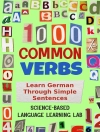This comprehensive volume describes evidence-based strategies for supporting English language learners (ELLs) by promoting meaningful communication and language use across the curriculum. Leading experts explain how and why learning is different for ELLs and pinpoint specific best practices for the classroom, illustrated with vivid examples. Particular attention is given to ways in which learning English is intertwined with learning the student’s home language. The book addresses both assessment and instruction for typically developing ELLs and those with language disabilities and disorders. It demonstrates how educators and speech–language professionals can draw on students’ linguistic, cognitive, sociocultural, and family resources to help close the achievement gap.
Table of Content
Introduction,
Marilyn Shatz and
Louise C. Wilkinson
I. Early Language Experience and School Readiness
1. The Brain and Language Acquisition: Variation in Language Knowledge and Readiness for Education,
Barbara T. Conboy
2. The Process of Acquiring a First and Second Language,
Kathryn Kohnert and
Giang Pham
3. Language Choice and Competence: Code Switching and Issues of Social Identity in Young Bilingual Children,
Iliana Reyes and
Susan M. Ervin-Tripp
II. Language and Literacy Principles and Practices in School
4. Ways to Words: Learning a Second-Language Vocabulary,
Lisa M. Bedore, Elizabeth D. Peña, and
Karin Boerger
5. The Role of Phonology in Orthographically Different Languages,
Ellen H. Newman
6. Bilingualism and Cognitive Linkages: Learning to Read in Different Languages,
Ellen Bialystok and
Kathleen F. Peets
7. Learning English as a Second Language,
María Estela Brisk
III. Assessment and Interaction: Working with Children and Families
8. Communicative Repertoires and English Language Learners,
Betsy Rymes
9. Difficulty, Delay, or Disorder: What Makes English Hard for English Language Learners?,
Carol Westby and
Deborah A. Hwa-Froelich
10. Implications for Assessment and Instruction,
Alison L. Bailey
11. Extended Implications for Practice: Families as Allies,
Leslie Reese and
Claude Goldenberg
12. Recent Research on English Language and Literacy Instruction: What We Have Learned to Guide Practice for English Language Learners in the 21st Century,
Diane August, Claude Goldenberg, William M. Saunders, and
Cheryl Dressler
About the author
Marilyn Shatz, Ph D, is Professor Emerita of Psychology and Linguistics at the University of Michigan and Adjunct Professor of Psychology at the University of North Carolina, Wilmington. She is a fellow of the American Psychological Society and has been a Guggenheim Fellow; a Senior Research Fulbright Scholar; and a recipient of a National Institute of Education fellowship. An expert in language and the development of communication skills, Dr. Shatz has used both naturalistic and experimental methods to carry out research on the interrelations among social, cognitive, and language development in young children. Her current research investigates how young children acquire abstract vocabulary. Dr. Shatz has published more than 70 chapters, articles, and books, and has served as an editor and editorial board member of numerous journals.
Louise C. Wilkinson, Ed D, is Distinguished Professor of Education, Psychology, and Communication Sciences at Syracuse University, where she teaches courses on literacy learning for English language learners. An internationally recognized leader in education, she is best known for her extensive research on school-age children’s language and literacy learning and has published 150 articles, chapters, and volumes. Dr. Wilkinson has served on the editorial boards of major research journals. She is a fellow of the American Psychological Association, the Association for Psychological Science, the American Educational Research Association, and the American Association of Applied and Preventive Psychology. Dr. Wilkinson cochairs the Literacy Leadership for Urban Teacher Education Commission of the International Reading Association.












